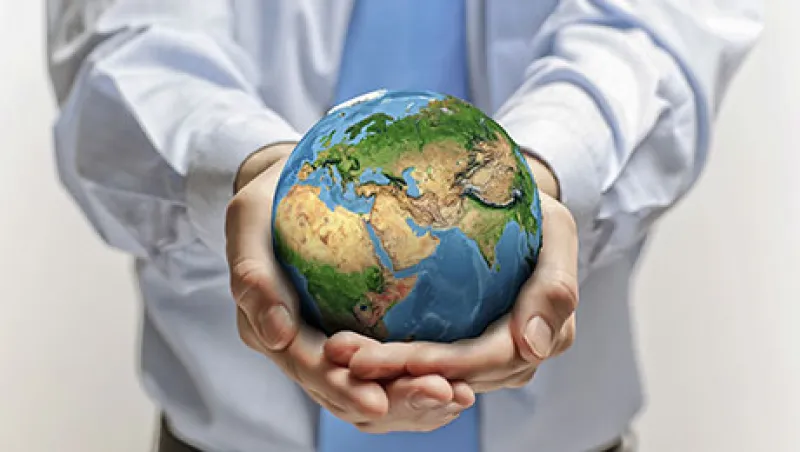Earth Day turned 45 this year, an age when many people hit a midlife crisis, questioning the value of the investments they have made in their career or their ability to achieve goals. Others are hitting their stride and finding they have the right blend of energy, hard-won wisdom and a clearer vision of what they want and can achieve.
Earth Day falls unequivocally into that second category.
Consider the news in the past 12 months alone:
Solar photovoltaic costs have been dropping for a long time, but the order of magnitude became clear in September when the International Renewable Energy Agency found that prices had fallen by 80 percent since 2008 and further reductions were well within sight. After decades of diplomatic gridlock over climate change, the U.S. and China — the world’s two largest economies, energy consumers and greenhouse gas emitters — reached a historic climate change deal.
The specific goals are ambitious but achievable. The U.S. agreed to cut its 2005 carbon emissions levels by as much as 28 percent before 2025. China consented to cap its carbon emissions by 2030 and aim to get 20 percent of its energy from zero-emissions sources by the same year. More important, the pact signals the beginning of the end for the argument that it is impossible to have strong economic growth while transitioning to a low-carbon economy.
Over the past year, we have witnessed an unprecedented flow of industry and think tank data and research showing the increasing feasibility and attractiveness of renewable energy in developing nations, where most of the world’s population lives.
More than 600 million people in sub-Saharan Africa — the majority — still live without a reliable source of electricity. The deprivation that causes is pervasive. Hospitals cannot refrigerate vaccines. Children do not have enough light to do their homework at night. Businesses cannot reliably manufacture their goods. But have these nations rejected environmentally friendly solutions as burdensome? Far from it. The continent added more renewable energy capacity in 2014 than it had in the previous 14 years combined.
Research released just weeks ago found that across the developing world, renewable energy grew by 36 percent — nearly equal to the level of investment in renewables by advanced economies. Every one of the top five countries that invest most heavily in renewables as a percentage of GDP is a developing nation: Uruguay, Mauritius, Costa Rica, South Africa and Nicaragua. As recently as three or four years ago, such a shift would have seemed fanciful.
It is important to validate these milestones of success and sources of hope. But we should also recognize that the past year provided us with an unambiguous picture of the hard work ahead. The Intergovernmental Panel on Climate Change decisively shifted the terms of debate on global climate change. Building on the tentative and qualified conclusions of 2007, the 2014 report from the UN scientific organization stated flatly: Human influence on the climate is clear, emissions levels are unprecedented, and “widespread and consequential impacts” are already proven around the world.
The IPCC went on to say that if the world’s fossil fuel reserves such as coal and oil were fully used, they would surpass the carbon budget — the amount of emissions that the environment can handle — by sevenfold.
More institutional investors, including university endowments, sovereign wealth funds and pension funds, than ever before have begun to adopt strategies for moving toward low-carbon portfolios or, in some cases, divesting from fossil fuel investments altogether.
More and more nations are beginning to recognize that renewable energy is not only good for the global environment, it provides a buffer against price shocks and helps them avoid geopolitical reliance on foreign energy suppliers. Multilateral alliances like the Group of Eight and development finance agencies such as the Overseas Private Investment Corp. are enthusiastically endorsing green bonds and other environmentally conscious investment vehicles.
Four and a half decades after Earth Day’s inception, green investment is going places — and none too soon for the years of work ahead.
Elizabeth Littlefield is the president and CEO of U.S. government developmental finance body Overseas Private Investment Corp., in Washington.






